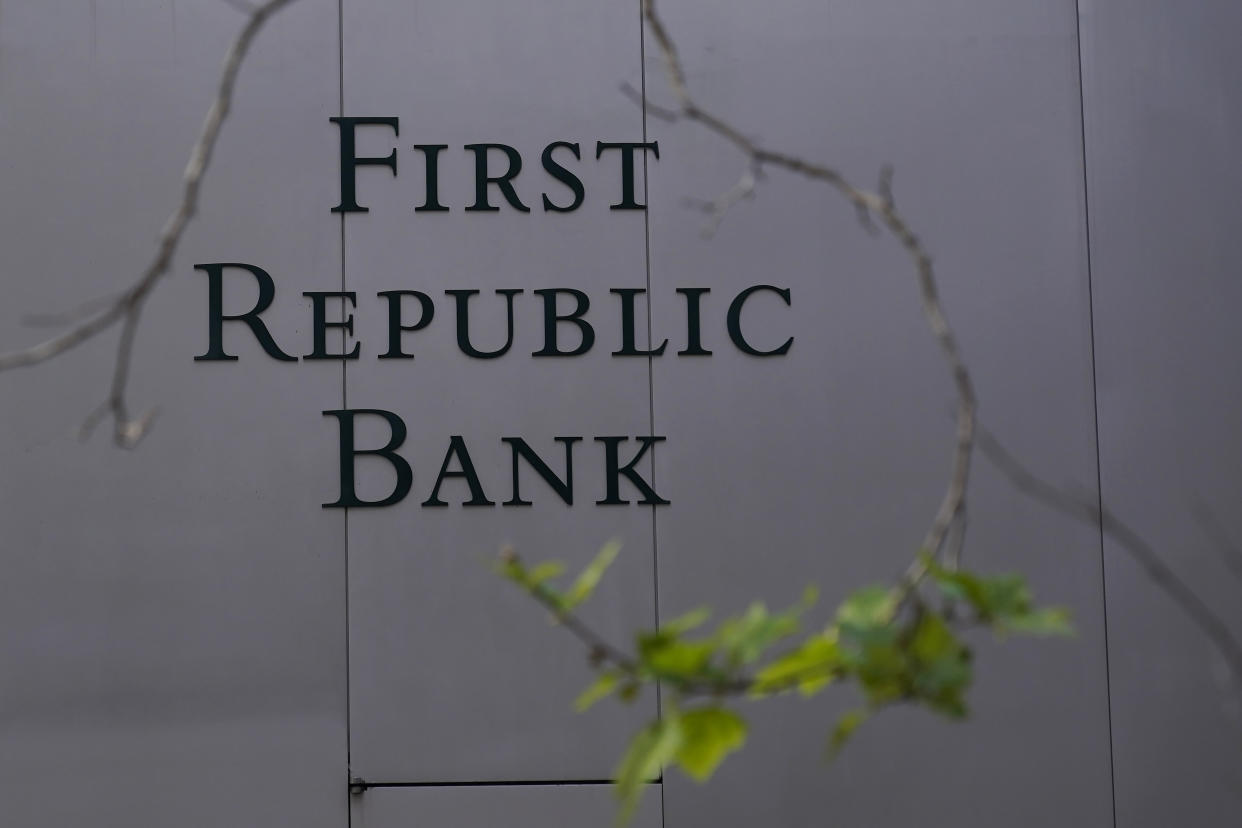#JPM, Bank of America consider First Republic bids as FDIC sets Sunday noon deadline [Video]
![#JPM, Bank of America consider First Republic bids as FDIC sets Sunday noon deadline [Video]](https://s.yimg.com/ny/api/res/1.2/4l_BMlDRvzoj96HNbFKQKw--/YXBwaWQ9aGlnaGxhbmRlcjt3PTEyMDA7aD04MDA-/https://media.zenfs.com/en/aol_yahoo_finance_433/5a1c804bdc77f5624a7a9f2f32434e1f)
The FDIC is approaching some of the same banks that came to First Republic’s aid in March with $30 billion in uninsured deposits, this person said. These banks were reluctant this week to provide a second rescue, fearing First Republic would be seized anyway.
Yahoo Finance has learned that JPMorgan Chase (JPM) and Bank of America (BAC), the nation’s two largest banks, are weighing potential bids following a government takeover. The FDIC has set a 12 p.m. ET Sunday deadline for offers. The Wall Street Journal reported Friday that Pittsburgh-based PNC (PNC), the nation’s sixth-largest bank, is among those considering a bid.
The goal is that “somebody else buys them and hopefully opens them up as soon as possible so there’s not turmoil in the markets,” the person said.
Multiple reports Friday suggested that the FDIC would likely place First Republic into receivership.

The FDIC sometimes operates a marketing process for banks it deems are tipping toward failure. And sometimes such a process can take place well ahead of an actual seizure, by as much as 60 to 90 days. And sometimes a failure doesn’t happen even after bidding occurs.
The FDIC may be able to find a buyer among the big banks that is willing to take all of First Republic’s deposits and perhaps some of its troubled assets, too. Sometimes the FDIC can sweeten such deals by agreeing to share future losses on loan portfolios, for example.
The San Francisco lender first began to fight for its survival in March when panic about the stability of regional lenders cascaded across the country. It tried to weather the turmoil by borrowing from the Federal Reserve and the Federal Home Loan Bank while also taking in $30 billion in uninsured deposits from 11 of the country’s largest banks. JPMorgan provided $5 billion of the $30 billion.
But First Republic’s situation turned more serious Monday after it disclosed a loss of more than $100 billion in deposits. The drop was greater than expected and raised new concerns about the company’s chances for survival. By Friday, First Republic’s stock had dropped to $3.50, down 97% for the year. The bank’s market value, once $40 billion, was just $640 million.
Investors punished the stock, sending it down nearly 50% in one day and then nearly 30% on Wednesday. On Thursday it rose nearly 9%, before plunging again Friday by 43%.
First Republic was founded in 1985 by Jim Herbert, and over the decades expanded rapidly as it attracted wealthy customers clustered on either coast by offering them large single-family mortgages at ultra-low rates along with personalized service.
It went from $88 billion in assets at the end of 2017 to more than $200 billion at the end of 2022. It was the nation’s 14th-largest lender as of Dec. 31.
Then it, like many banks of its size, struggled to adapt to an aggressive campaign by the Federal Reserve to raise interest rates as a way of slowing inflation.
The hikes lowered the value of the interest-rate sensitive assets on its balance sheet and helped create billions in unrealized losses, a hole that ultimately attracted the attention of investors and depositors following the fall of Silicon Valley Bank.
The bank also had lots of uninsured depositors, making them a greater flight risk during the chaos that unfolded in March.
When customers began pulling more than $100 billion, First Republic had to replace its deposit funding with more expensive borrowing from the Fed and the Federal Home Loan Bank system. Those borrowings, which peaked on March 15 at $138 billion, created another problem by placing more pressure on its profitability.
First Republic developed a turnaround plan. It said Monday while releasing its first-quarter results that it planned to increase its amount of insured deposits, trim its borrowings, decrease its loan balances and reduce its workforce by 20-25%. Borrowings had dropped to $104 billion as of April 21 and the deposit outflows had slowed.
But its disclosure about the amount of deposits lost in March, and the fact that the company decided not to take any questions from analysts, spooked investors.
Short sellers also applied more pressure. Those with bets against First Republic have earned $1.37 billion year to date on a mark-to-market basis, according to S3 Partners. It is the most profitable short position among stocks thus far in 2023, according to S3.
Click here for the latest stock market news and in-depth analysis, including events that move stocks
Read the latest financial and business news from Yahoo Finance
Originally published
If you liked the article, do not forget to share it with your friends. Follow us on Google News too, click on the star and choose us from your favorites.
For forums sites go to Forum.BuradaBiliyorum.Com
If you want to read more News articles, you can visit our News category.


![#College Football Playoff set to expand to 12 teams in 2024 after agreement with Rose Bowl [Video]](https://s.yimg.com/ny/api/res/1.2/.mrqrZ7VU6Thxxwkmqo8eA--/YXBwaWQ9aGlnaGxhbmRlcjt3PTEyMDA7aD04MDA-/https://media.zenfs.com/en/aol_yahoo_sports_800/d77ad3d383d60954acbb8d222949d95d)

